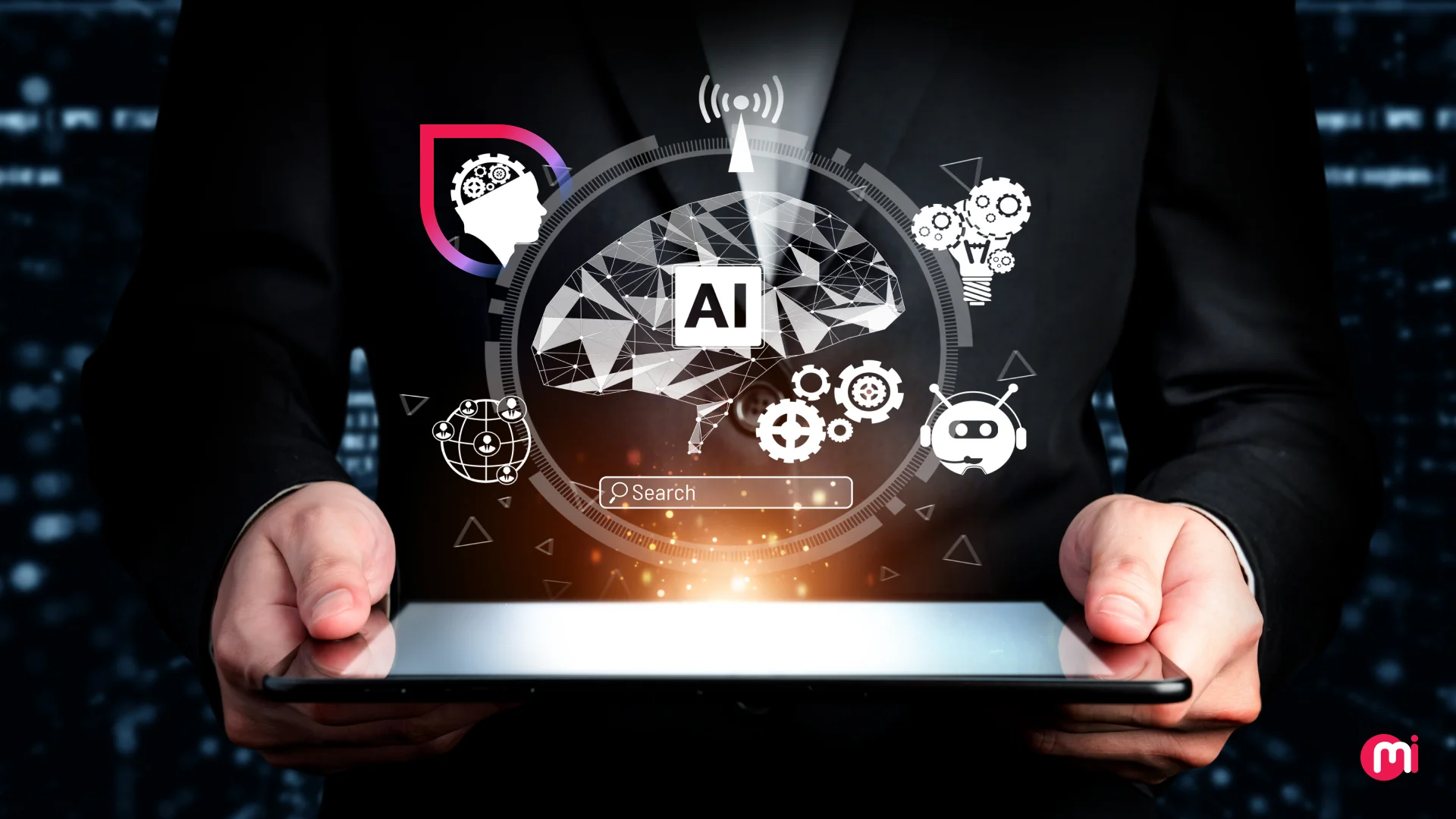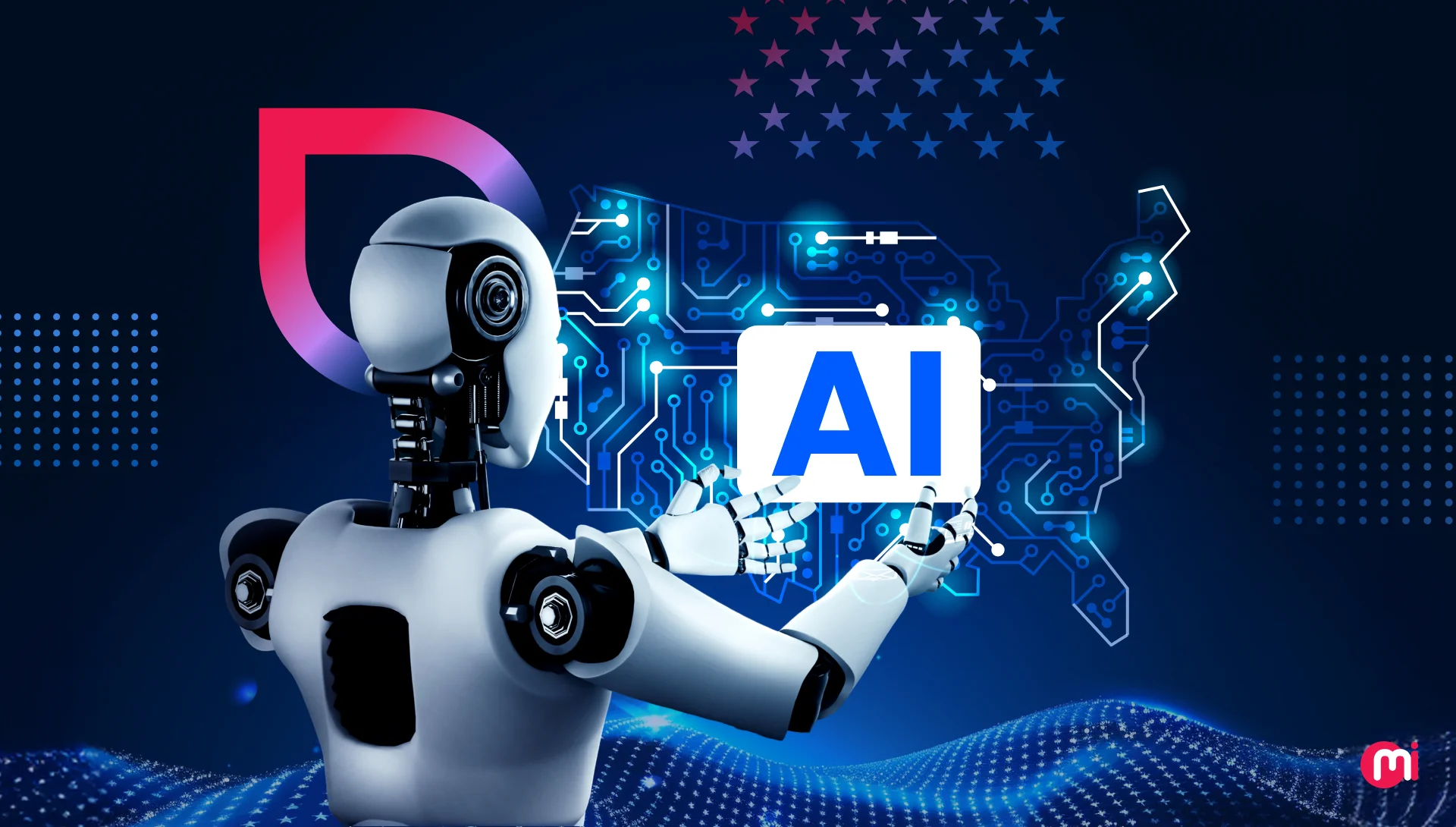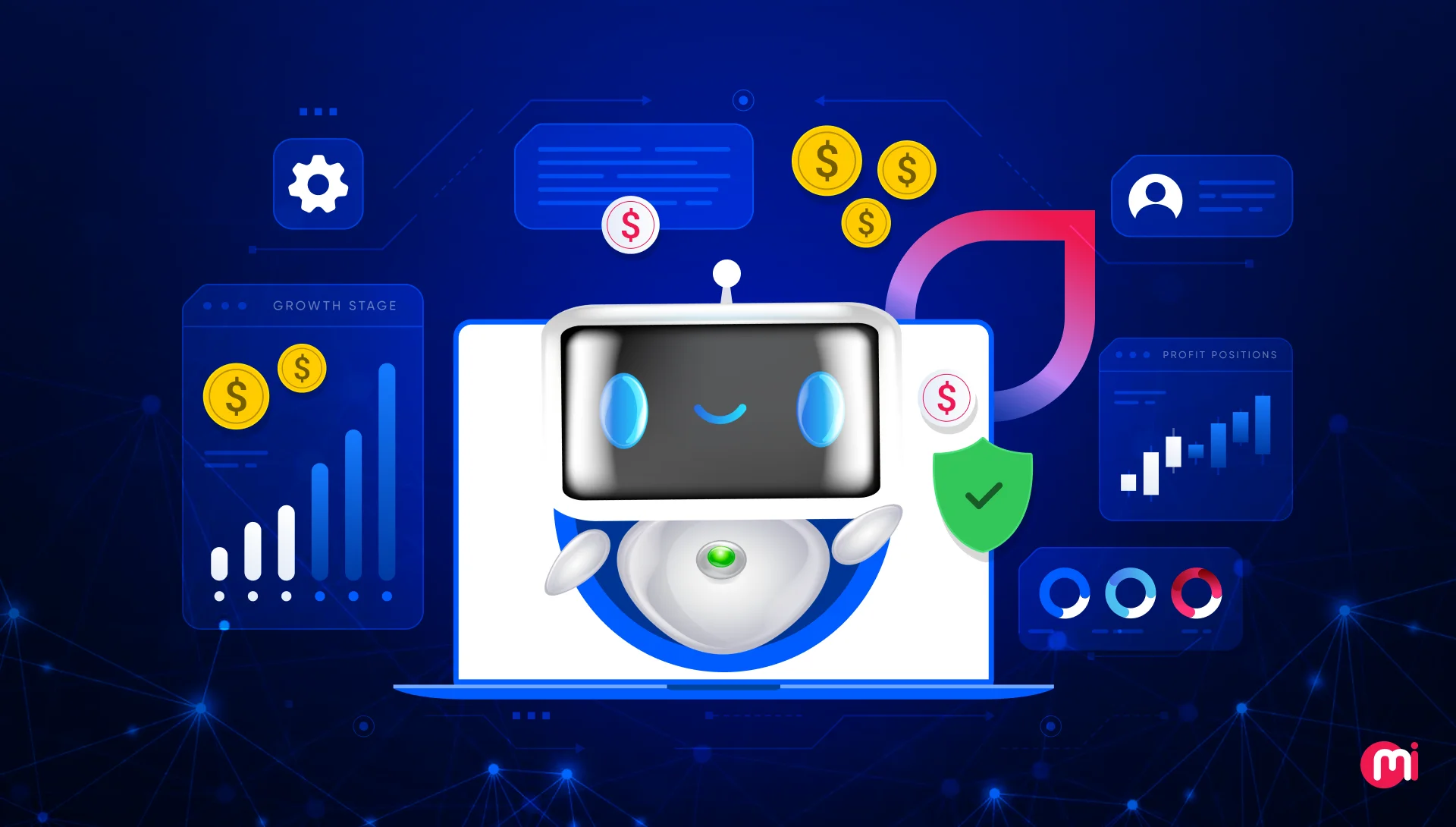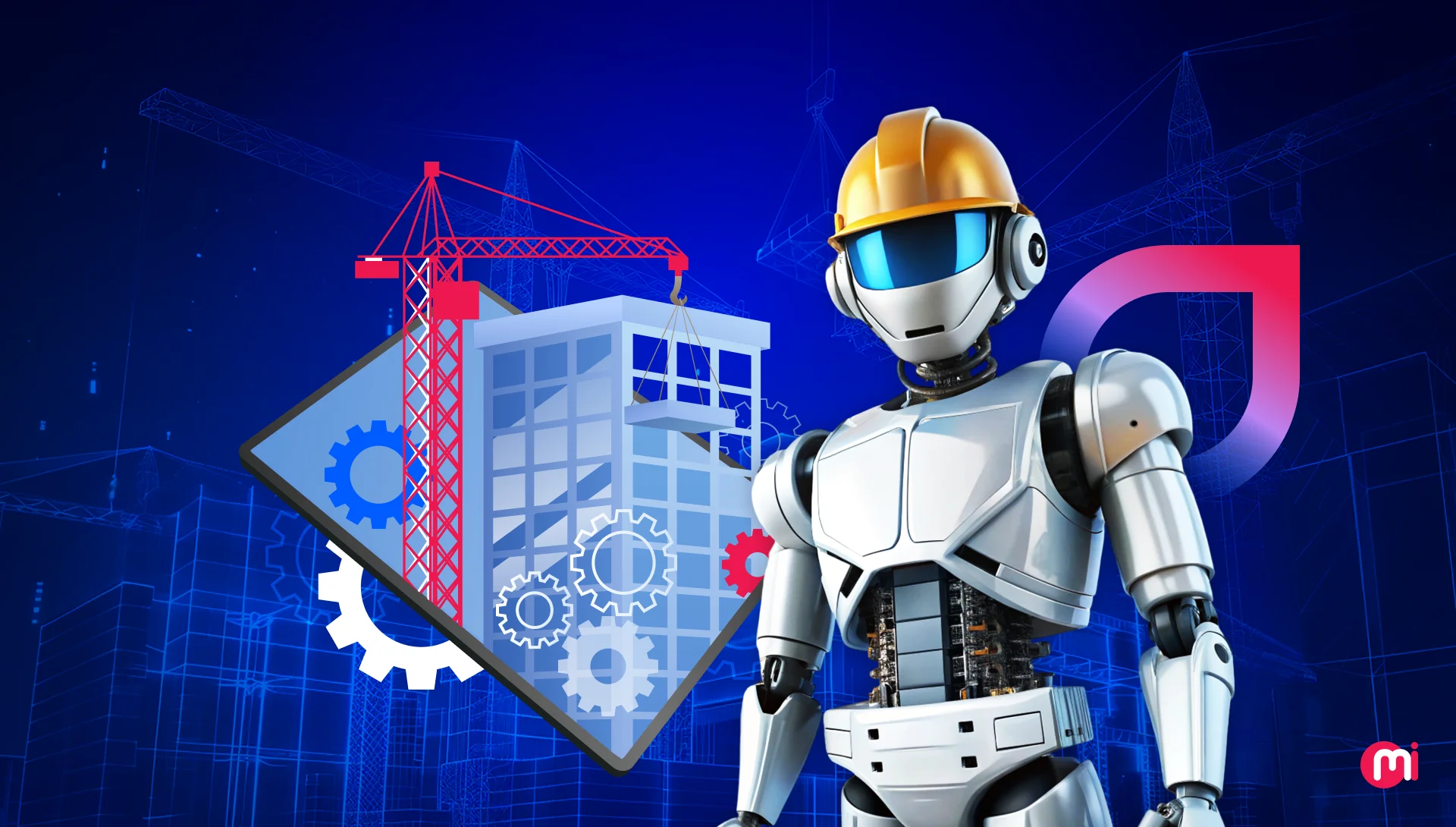AI in Legacy System Modernization: Overcoming Challenges, Driving Growth
- AI/ML
- May 2, 2025
66% of businesses still rely on legacy systems, risking stagnation in today’s digital-first economy. Modernizing legacy systems is no longer just about efficiency but a survival strategy to retain market leadership. Yet, outdated approaches like manual code migration or ‘lift-and-shift’ drain budgets and delay ROI. What if we say there’s a way to slash its timeline by 40-60%? Leveraging AI in legacy system modernization is the way! Read this blog to know how modernizing your legacy system with AI can make a difference.
Tech debt is the major factor that slows down the growth of businesses that are still using legacy systems in place. These systems in the majority of enterprises (coming under Fortune 500) were built more or less 20 years ago with trending technologies of that time. The number of such software systems is around 70%. Undoubtedly, those software systems have become the backbone of businesses that are serving in for over decades.
But where does this tech debt come from? It’s from the need for quick, easy solutions to fix software performance and bugs, increasing maintenance costs and reducing flexibility to integrate with modern technologies. Definitely, this quick solution to fix legacy software can sound effective, but for the short term only. Hence, software tech debt is the biggest “IT problem” for businesses.
If we see the stats, then, on average, organizations waste 23- 42% of their development time due to technical debt. This can incur $361,000 of technical debt for every 100,000 lines of code in their software.
If you’re one of those businesses, you could have saved that cost or utilized it for other purposes such as AI innovation, expanding cloud computing capabilities, and more.
However, it’s still not so far. You can still save upcoming legacy software maintenance costs by swiftly transitioning it to modern architecture without disrupting ongoing business processes. That you can do by leveraging AI in legacy system modernization.
But how to do it and what you’ll get in return is something that you’ll find in this blog.

What is a Legacy System?
A legacy system is an aging software and application that organizations continue to rely on despite their outdated architecture. Think of it as the “old engines” powering critical business processes as their backbone.
For example, a decades-old banking system that’s still processing millions of transactions daily.
Once cutting-edge, now they struggle to keep pace with modern demands. They are now becoming bottlenecks for innovation.
Legacy systems often feature:
- Outdated technology stack
- High maintenance costs
- Siloed data architecture
- Limited scalability
- Security vulnerabilities
Despite their drawbacks, many organizations hesitate to modernize due to the fear of disrupting mission-critical business processes, the cost, and replacing legacy systems.
How Do Legacy Systems Hold Organizations Back?
As businesses keep using legacy systems, they may face technical debt – a hidden tax on productivity caused by outdated code, patchwork fixes, and deferred modernization. Over time, this debt compounds, leading to crippling issues like:
- Slowed pace of innovation due to legacy technology bottlenecks
- Struggle in integrating legacy systems with modern digital solutions and capabilities
- Adhering to evolving regulatory requirements may become complex and expensive
- Acquaintance with system instability and resiliency risks that are complex to fix
- Costly legacy system maintenance (as organizations spend 70% of IT capacity in maintaining legacy systems)
- Missing opportunities to invest in more value-adding development due to legacy systems eating the majority of the IT budget.
- May lack the ability to attract top talents, adding value to the business.
This makes it even more important to opt for enterprise application modernization. Just deciding to modernize your systems is not the solution. You also need to finalize the approach. To help you better, in the next section, we discuss why opt for AI-powered legacy system modernization.
Where Do Traditional Legacy System Modernization Methods Fall Short?
Legacy system modernization isn’t a new challenge, but traditional approaches, covering “lift-and-shift,” incremental updates, and more, may delay your business’s opportunity to achieve a competitive edge. Here’s why they fall short:
- It often involves replacement or rewriting entire legacy system, which can cause major operational disruptions.
- Often requires more investment and time because of the complexity of tightly coupled legacy systems.
- Traditional methods typically favor a one-size-fits-all strategy that doesn’t adapt to evolving business needs during the modernization journey.
- Moving data from old systems to new platforms is one of the most delicate parts of modernization. Doing all through traditional approaches can ask for more time and sophisticated planning to ensure clean, consistent, and compliant data migration.
- Legacy systems are mainly created with traditional programming languages, and finding talents who are familiar with that can be hurdlesome when modernizing it using traditional approaches.

How Can AI in Legacy System Modernization Make a Difference?
While traditional modernization approaches/methods treat symptoms, not root causes, it’s a must to know how AI flips the script. Beyond transformation, AI aims to turn legacy systems into strategic assets. Below, we’ve mentioned how AI drives faster, smarter, and future-proof optimization opportunities:
1. Automated Code Analysis & Refactoring
Legacy systems often contain millions of lines of code written in outdated languages with complex dependencies and minimal documentation. Manually replacing all using the latest technologies can be an effort-intensive process. In this case, AI can come as a transformative technology.
You can leverage AI code analyzers to analyze and scan vast codebases to identify patterns, dependencies, dead code, security vulnerabilities, and performance bottlenecks that might be overlooked in manual reviews.
Using static and dynamic analysis, you can even make AI provide insights on how the system code behaves in production, helping the development team to prioritize modernization based on risk, complexity, and business impact.
Some advanced AI tools can even perform automated refactoring, converting COBOL or other legacy languages to modern alternatives like Java or Python while preserving business logic.
2. Intelligent Data Migration
Data migration is often the most challenging aspect of modernization projects. AI brings new capabilities to this critical process with automation. It uses machine learning to identify sensitive information, ensure compatibility with new systems, and enrich data that can fit well to be migrated to the new ecosystem.
3. Predictive Maintenance & Risk Mitigation
Modernizing legacy systems while preserving their key characteristics presents unique challenges. Traditional methods may fail to identify and solve those challenges, but AI paves the way by offering solutions, such as:
- Digital twins – AI-powered simulations of legacy systems – allow teams to test modernization approaches safely before applying changes to production environments.
- Anomaly detection – this predicts faults during legacy system modernization and helps reduce downtime and enhance system reliability.
- Predictive analytics – this helps to predict areas where maintenance is required. Using this solution, businesses can optimize a legacy system’s asset lifecycle and achieve cost savings in the long run.
- Risk mitigation – this helps to identify security vulnerabilities and ensure compliance of legacy systems with industry- and region- specific regulatory standards, resulting in reduced security risks.
4. Generative AI Agents to Simplify Legacy System Modernization
You can utilize Generative AI to create a range of specialized agents that work independently and manage end-to-end legacy system modernization workflows. These agents can enhance modernization efforts by:
- Analyzing Legacy System Code: Identifying opportunities within legacy code to generate better business value.
- Translating Complex Elements: Converting impenetrable legacy system elements from code to call logs into clear, understandable English in minutes, facilitating the modernization process.
- Assisting Code Conversion: Deploying AI agents (with human oversight) to transform outdated code into modern programming languages.
- Performing Specialized Tasks: Enabling AI agents to conduct data analysis, execute sophisticated integrations, write and run test cases, and enrich outputs based on real-time human inputs.Many of the best AI agents are already excelling in these specialized roles across industries.
- Restructuring and Migrating Applications: Streamlining the remediation and migration of applications to cloud platforms to achieve additional cost benefits.
- Scaling Across Business Areas: Leveraging multi-agency models to scale value across various business functions.
If implemented correctly, Generative AI agents can reduce modernization time by 40–50%.
Challenges and Considerations for Modernizing Legacy Systems using AI
While AI promises to transform the legacy system modernization process, it comes with its own set of challenges, which may become roadblocks to achieving a competitive edge for businesses. Here’s a breakdown of possible challenges and roadblocks you can face when using AI for legacy system modernization:
1. Data Quality & Accessibility Issues
Challenge: Legacy systems often store data in fragmented, unstructured formats that AI models struggle to process.
Considerations:
- AI-powered data cleansing tools can help to standardize and enrich legacy data
- Using AI-powered incremental/phased migration with priority to high-value data streams can add value
2. Integration Complexity with Legacy Architecture
Challenge: Legacy systems are tightly coupled with outdated dependencies, which can be a next-level, effortful task to untangle those without disrupting daily workflow.
Considerations:
- Deploying AI middleware as a ‘translator’ for legacy systems can become a bridge to technology transformation.
- Opting for a hybrid architecture where critical legacy components stay as is while modernizing others can solve this integration issue.
3. Lack of AI-Ready Talent
Challenge: There are talent shortages and knowledge gaps because engineers with knowledge about legacy systems are retiring and a new generation of developers is only familiar with the latest technologies, such as AI and others. Finding talents who know both generations of technologies is another challenge.
Considerations:
- Hire AI experts (with skills to modernize traditional systems) to bridge skill gaps.
- Upskilling team to execute that (it may take months and even a year)
4. Ethical & Compliance Risks
Challenge: AI models trained on biased legacy data may perpetuate discrimination or violate regulations (e.g., GDPR, HIPAA).
Considerations:
- Audit legacy data for bias
- Implement AI governance frameworks to ensure compliance

A Roadmap for Using AI in Legacy System Modernization
Legacy system modernization with AI is a strategic journey. Below we’ve mentioned a roadmap to help enterprises harness AI’s potential while minimizing risks and maximizing ROI.
STEP 1: Audit Your Legacy System & Create Strategies
- Conduct a comprehensive audit of your legacy systems to identify components critical to businesses and the ones that are facing performance, maintainability, security, and integration challenges.
- Set measurable targets such as reducing downtime, cutting maintenance costs, and accelerating time-to-market. Align these with the overall business strategy.
- Secure executive support and ensure cross-departmental collaboration to drive strategic change with minimal disruption.
STEP 2: Prepare Data and Check for Infrastructure Readiness
- Use AI-powered analytics to uncover inefficiencies and predict where maintenance is most needed.
- Identify and focus on systems where modernization will yield the highest benefits in terms of cost savings, operational agility, and risk reduction.
STEP 3: Prioritize Use Cases Where AI Delivers Quick Wins
AI as a tech covers broad possibilities to innovate and transform your legacy systems. But how to leverage its capabilities is a task from the mentioned use cases of AI for legacy systems modernization:
- Automated code refactoring uses AI to analyze, optimize, and convert legacy code to modern languages.
- Predictive maintenance uses ML to forecast failures and schedule preventive maintenance.
- Intelligent data migrations enable automation of data transformation and migration from legacy systems to modern platforms.
- Digital twin simulates test modernization approaches in a risk-free environment
STEP 4: Opt for Pilot Implementation
- Select a non-critical, low-risk but high-friction component of your legacy system as a pilot to implement AI-driven modernization. This minimizes disruption while providing a mock drive for new processes.
- Start with prototyping and use iterative development to validate performance improvements and adjust based on feedback.
- Establish and track KPIs like reduced downtime, faster processing, cost savings, and more to gauge the pilot’s success.
STEP 5: Extend It To Full-Scale Deployment
- Expand AI-driven modernization efforts gradually across the organization. This time, select high-impact areas based on the pilot’s success, ensuring continuous alignment with business goals.
- Embed AI tools within the process to automate testing, deployment, and monitor legacy system modernization approaches to ensure quality consistency and rapid iteration.
- This time also prioritizes that AI implementations meet industry and regulatory standards.
Also Read: Benefits and Challenges of Legacy Software Modernization.
Real-Life Examples of Modernizing Legacy Systems Using AI
Explore some of the real-life examples of big, well-known brands using AI to transform their systems and workflows:
1. McDonald’s
McDonald’s, the world’s leading American multinational fast food chain with presence in 40,000+ locations across 100+ countries, aimed to become the most sophisticated and productive in the industry.
With a widely used mobile app, 150+ million loyalty members, and thousands of self-service kiosks, McDonald’s needed to accelerate innovation. Partnering with Google Cloud, it leveraged AI, data, and cloud technologies to enhance digital experiences and optimize restaurant operations. The goal was to deploy cloud-based AI solutions for real-time insights and, in the future, integrate generative AI to further improve user experiences.
Meanwhile, McDonald’s China sought to boost efficiency, cut costs, and enhance training at Hamburger University. Partnering with Microsoft, it established an AI lab utilizing LLMs, diffusion models, digital personas, and Microsoft’s Azure AI tools. The AI Lab also generated 20,000+ APIs to support R&D.
These innovations transformed internal processes, with AI-powered semantic search and assistants improving daily operations and team support.
2. NASA
NASA – the National Aeronautics and Space Administration – is an independent agency of the U.S. federal government that has launched numerous satellites to orbit the Earth and capture vast amounts of valuable data to help us better understand our planet. This data supports a wide range of critical applications, including agriculture, urban planning, and disaster response. However, managing over 100 petabytes of this geospatial satellite imagery and data poses a significant challenge for their legacy systems.
To overcome these challenges, NASA partnered with Microsoft to develop Earth Copilot, a custom solution built using the Azure OpenAI Service.
By integrating AI into their data systems, Earth Copilot allows users to interact with NASA’s geospatial data through natural language queries, dramatically simplifying data discovery and analysis.
This AI-driven approach democratizes access to complex Earth science data, empowering a diverse community of users, including scientists, educators, policymakers, and the public to make more informed decision-making and drive scientific exploration forward.
3. National Bank of Greece
For 184 years, the National Bank of Greece (NBG) has supported the Greek economy, serving over 6 million retail customers across 356 branches.
Managing massive volumes of documents like tax forms, payrolls, IDs, and utility bills manually was time-consuming, costly, and environmentally taxing. Although NBG had a rule-based OCR system, its limitations pushed them to seek a more flexible, AI-powered solution.
Using Microsoft Azure AI, NBG built a documentation intelligence platform in just four months, scanning and analyzing over 50 million document pages. Now, integrated with six customer-facing apps, including digital banking (serving 2+ million customers monthly), their AI-driven system processes 20+ document types in under 0.5 seconds per page, handling over 700,000 pages monthly.
Through AI innovation, NBG is not just going paperless — they’re redefining the future of banking.
ROI of AI-Driven Legacy System Modernization
AI-driven legacy system modernization delivers quantifiable returns by transforming outdated, labor-intensive systems into agile, cost-efficient platforms. Below, we’ve outlined some key ROI insights that business decision-makers should know when planning to use AI for legacy system modernization projects:
- AI contributed to automating key legacy system maintenance and modernization tasks, from error detection to code refactoring, reducing labor costs by 30-50%.
- AI-powered predictive maintenance cuts unplanned downtime by up to 40%, minimizing revenue loss and repair expenses.
- AI streamlines legacy system modernization workflows, resulting in accelerated project timelines by 25-60%.
- As AI modernizes legacy systems, it can help to free up teams to focus on innovation by automating reporting.
- AI-enhanced systems enable rapid deployment of new features, capturing market opportunities 2-3X faster.
- AI detects vulnerabilities and automates compliance checks, reducing breach risks and audit costs by up to 50%.
- Most importantly, AI helps businesses eliminate technical debt and dependency on outdated systems, avoiding costly emergency upgrades.
- It also helps to transform workspaces, shifting employees’ focus from repetitive tasks to strategic roles.
- Modern interfaces and AI features increase customer satisfaction by 20-40%.
In short, AI-driven application modernization strategies deliver ROI through both immediate cost savings and long-term competitive advantages.
Where Mindinventory Comes in To Help You Accelerate Your Legacy System Modernization Using AI
To achieve the ROI that we have discussed above, and everything apart from that, requires specialized expertise in AI technology as well as in strategic planning for legacy system modernization using AI.
That’s where MindInventory comes in as your ideal legacy system modernization company with proven expertise in delivering AI/ML solutions.
We understand that modernizing legacy systems isn’t just about patching up old code but about strategically transforming your IT infrastructure to unlock innovation, reduce technical debt, and pave the way for future growth.
- Our developers conduct comprehensive legacy system audits to pinpoint inefficiencies, eliminate technical debt, and identify high-impact modernization opportunities.
- With a clear understanding, we execute data modernization to ensure your data is clean, structured, and AI-ready, laying a solid foundation for further system upgrades.
- Then, we develop a strategic AI-driven legacy system modernization plan that prioritizes risk, cost savings, and business impact.
- Based on that, we actualize AI-driven automation & innovation that align well with your business objectives.
- Our methodology starts with a low-risk pilot project to validate improvements and refine our approach to expand it to full-scale modernization leveraging AI.
Partnering with us, our esteemed customer KFC has revolutionized its customer order management process and serves their customers 30% faster.

FAQs about AI-driven Legacy System Modernization
Yes, enterprises can leverage GenAI to transform outdated systems into agile, modern platforms. They can use Generative AI to automate code analysis, refactoring, and data migration, which helps to reduce technical debt and maintenance costs while accelerating innovation and improving integration with new technologies.
Code quality, complexity, cost, compatibility, criticality, and compliance – these are the 6 C’s to identify and evaluate legacy systems.
Gen AI in legacy system modernization can be used to analyze and refactor vast codebases, generate comprehensive documentation, streamline data migration and integration, detect vulnerabilities, and optimize performance.
AI accelerates modernization by automating labor-intensive tasks like code review, refactoring, testing, and data migration. It quickly identifies inefficiencies and predicts potential issues, cutting project timelines significantly and reducing costs, which makes the transition to modern systems much faster than manual methods.
Autonomous AI agents, real-time predictive analytics, adaptive maintenance solutions, and more are the AI possibilities that define the future of legacy system modernization.













